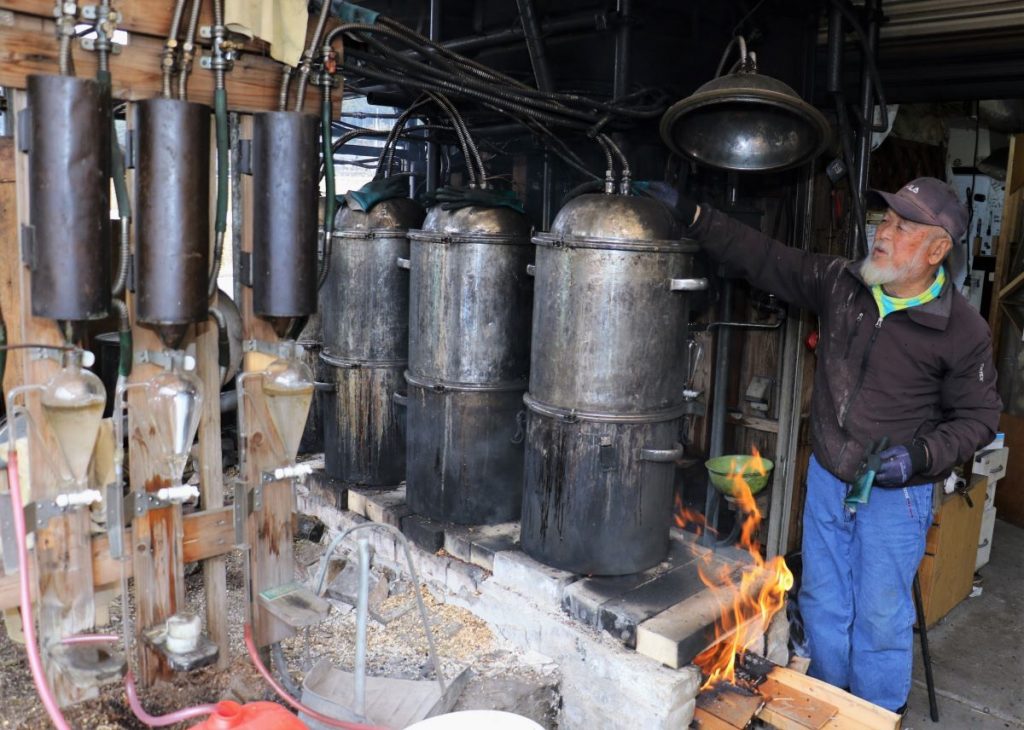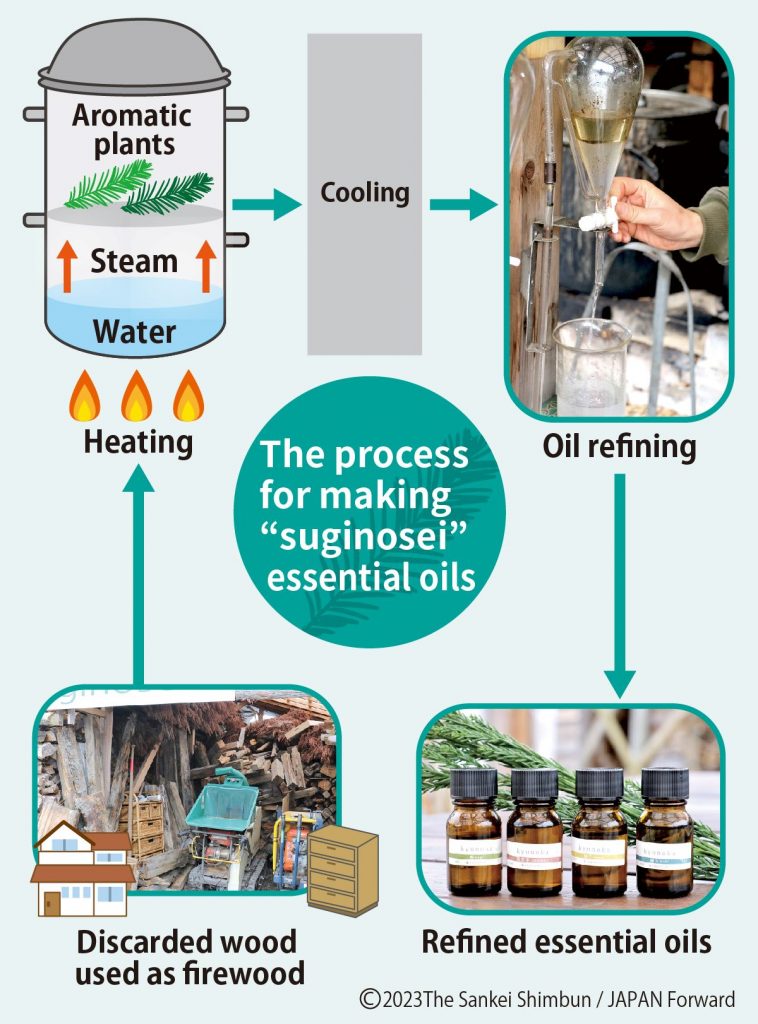
Read the full story on Japan 2 Earth - The Future of Forestry is Circular: Transforming Wood Waste into Essential Oils
A "circular economy" is one in which resources are circulated for as long as possible, transforming waste into resources. In Kyoto, the concept has been adopted for the production of essential oils using remnant wood from forest thinning as raw material.
With mountains increasingly abandoned due to the slowing forestry industry, the project helps to circulate timber that would otherwise be discarded. It also contributes to maintaining the forest. The effort is attracting attention for leading to sustainable forest management, a goal incorporated in the UN Sustainable Development Goals (SDGs).
Utilizing the Local 'Treasure Trove'
"I think it's about time," says Hiroshi Murayama, 74, who runs Suginosei, a workshop nestled in the corner of a rice field that skirts a cedar forest-covered mountain. On a mid-January day, Murayama lifts the lid of a large steaming pot and pulls out the leaves and branches of the kuromoji tree (Lindera umbellata).
The workshop is in the Keihoku district of Kyoto Prefecture's Ukyo Ward, about 35 km northwest of Kyoto Station. With a forest cover of about 90%, the area has long been known as a source of high-quality lumber. For over ten years, Murayama has been producing essential oils after developing an original distillation system.

He operates his workshop on the belief that the surrounding area is a "treasure trove of everything we need, from fuel to raw materials to water."
Aromatic Plants as Raw Materials
More than ten species of aromatic plants serve as raw materials, including kuromoji and Kitayama cedar. Most of these are branches and leaves left over from thinning and pruning, but occasionally materials are purchased.
Scrap wood and wood left on the mountain are also used as firewood for steaming the branches and leaves. Some people even bring old wooden furniture to the workshop. They can dispose of it for free, and Murayama can use it as firewood.

The workshop has created a system to circulate local resources. Water for cooling in the distillation process comes from the groundwater of a nearby waterway. Pulpy residue from the distillation process is used as fertilizer for the fields.
"We were doing this before the term 'SDGs' became popular," Murayama laughs.
Continue reading the full story on Japan 2 Earth.
And find more great articles on the environment and the challenges of achieving the SDGs on our new website Japan 2 Earth (J2E), sparking a transition to the future.
RELATED:
- Kasugayama Primeval Forest: Managing its Many 'Messengers of the Gods'
- Discovering Living Treasure in Tropical Forests with Japan’s State-of-the-art DNA Analysis
(Read the article in Japanese.)
Author: Sachimi Tanaka







